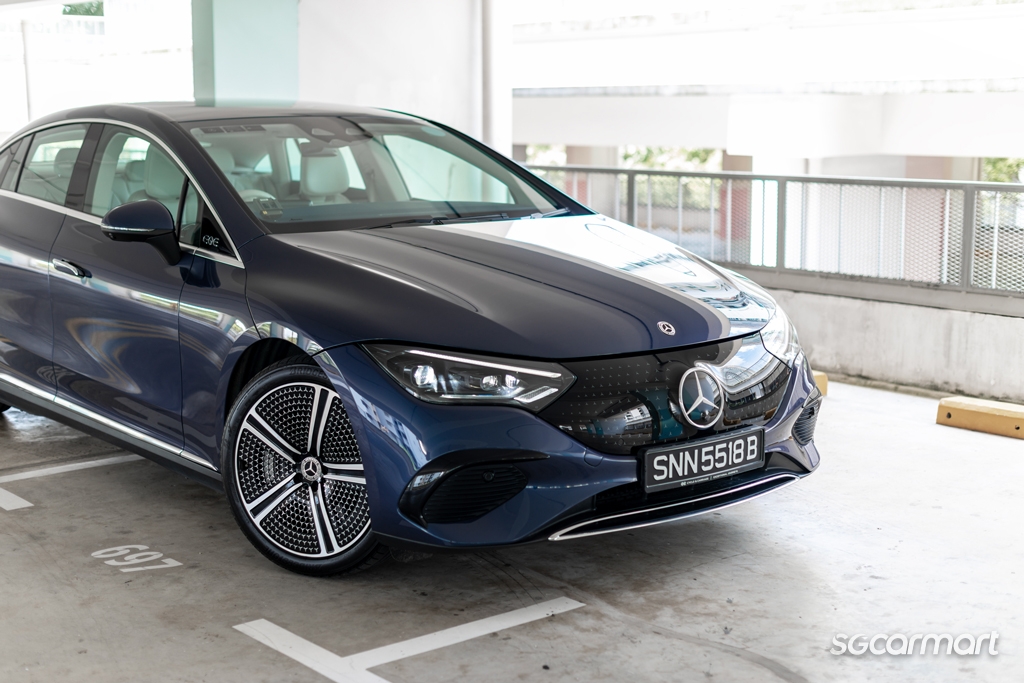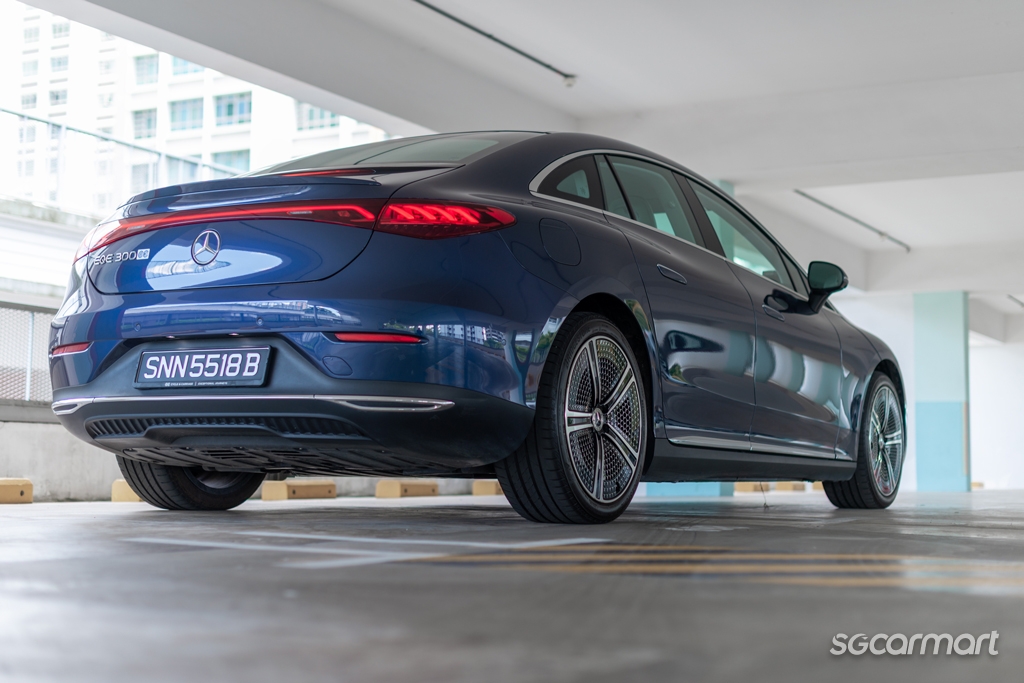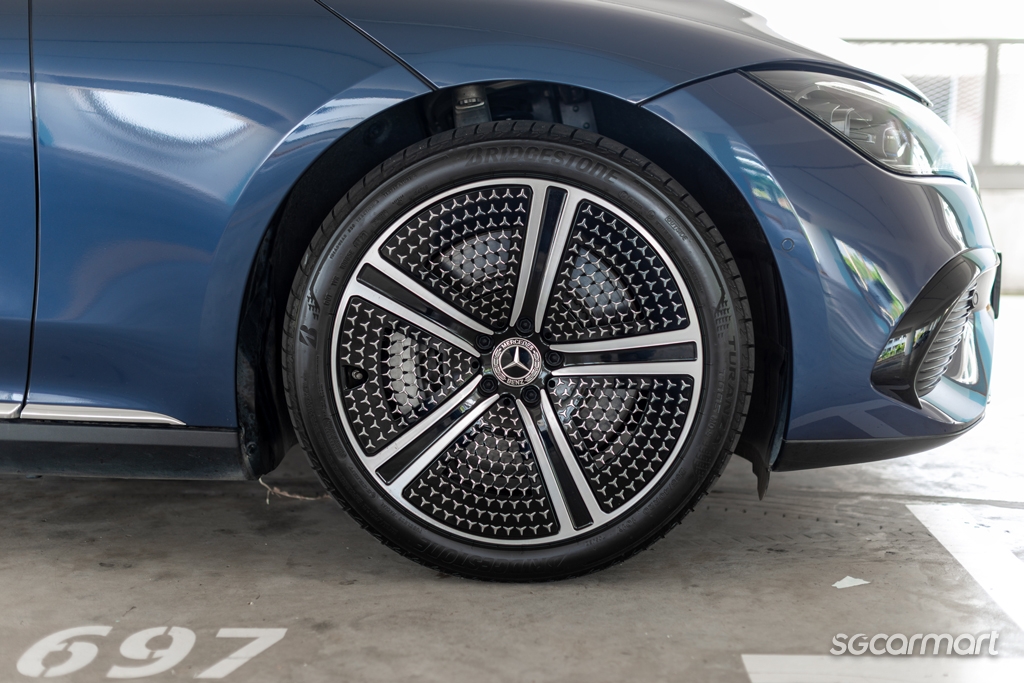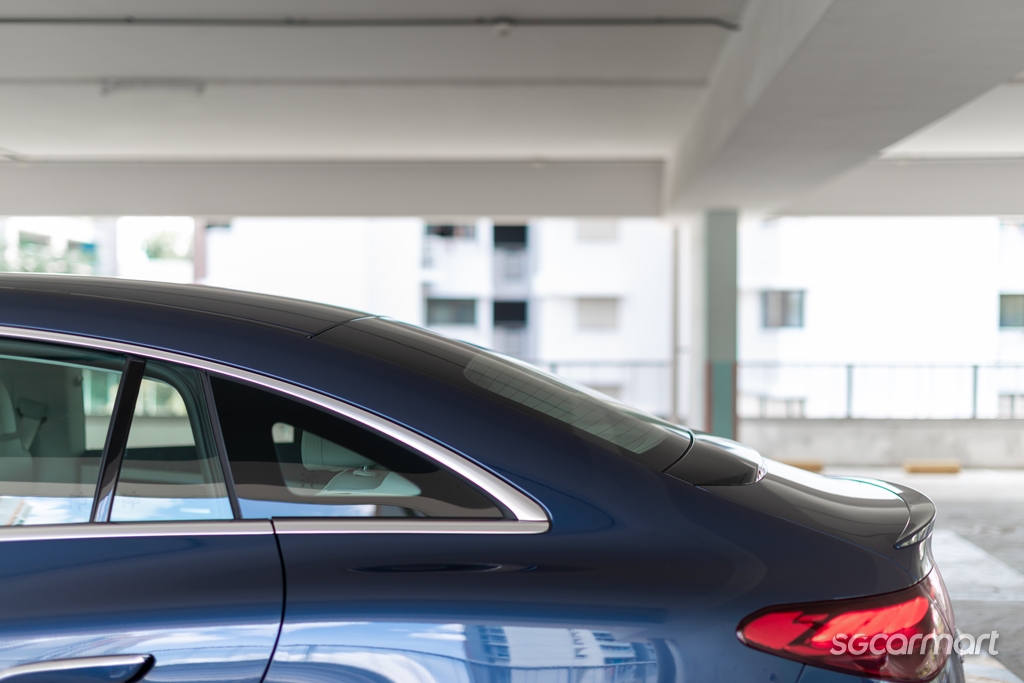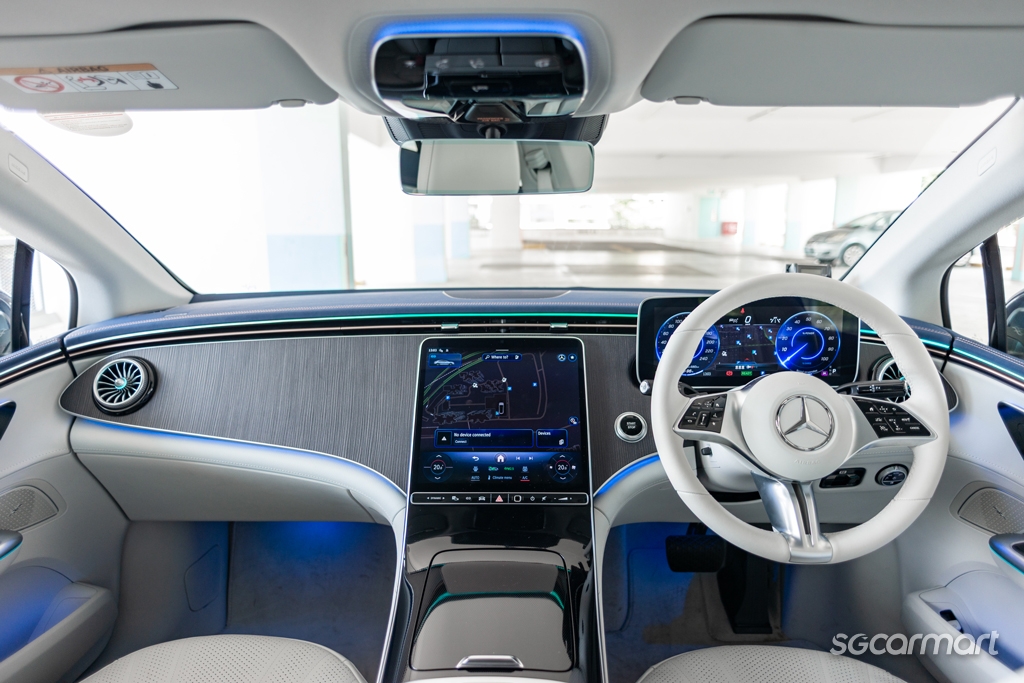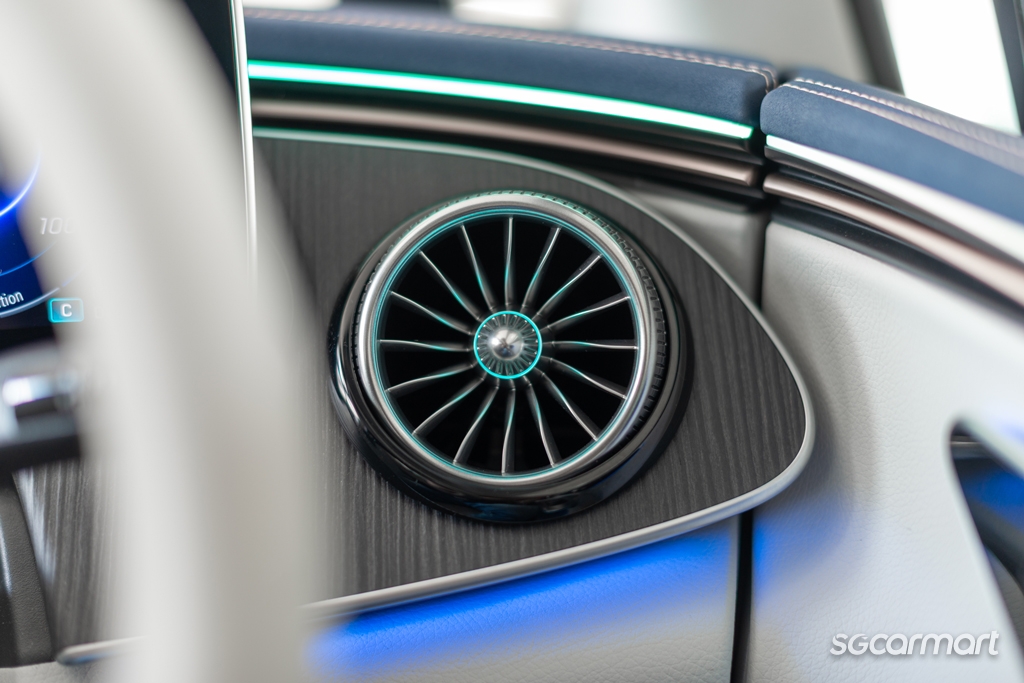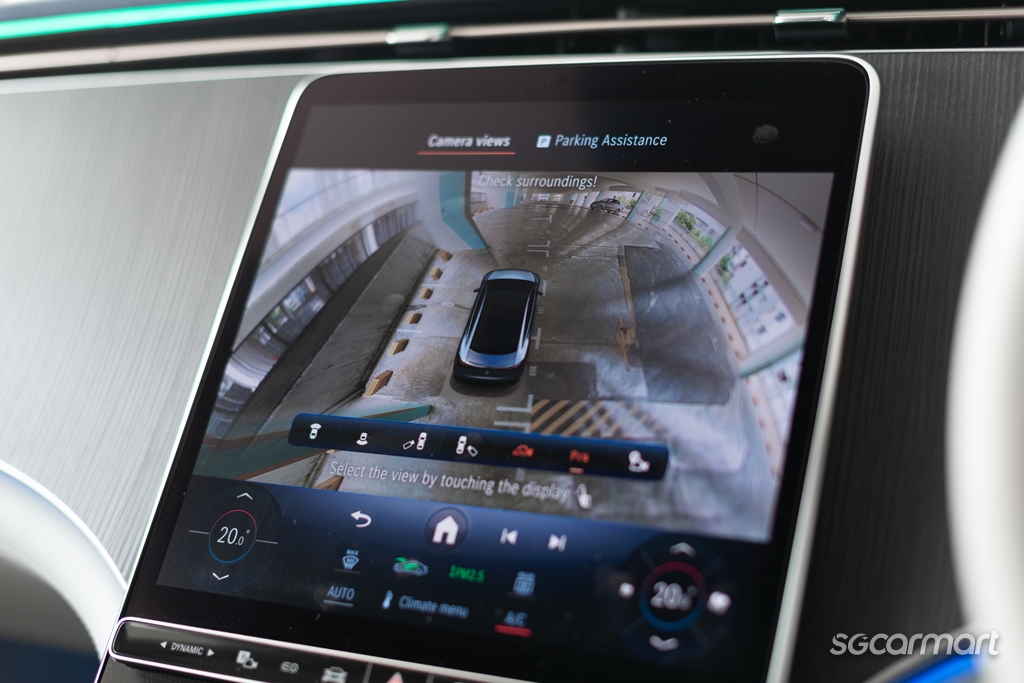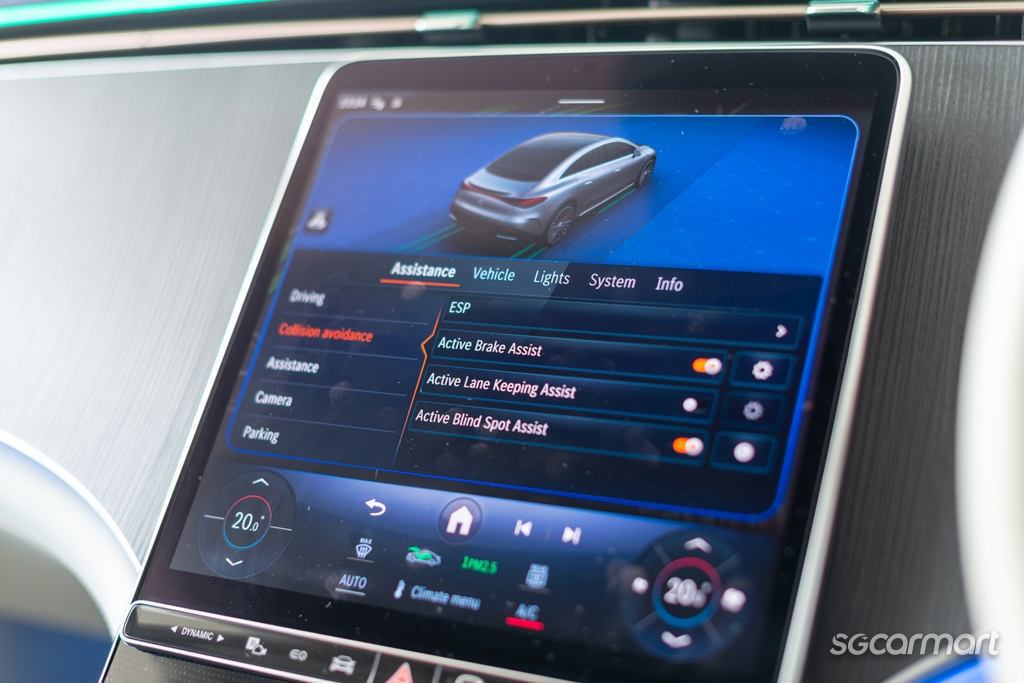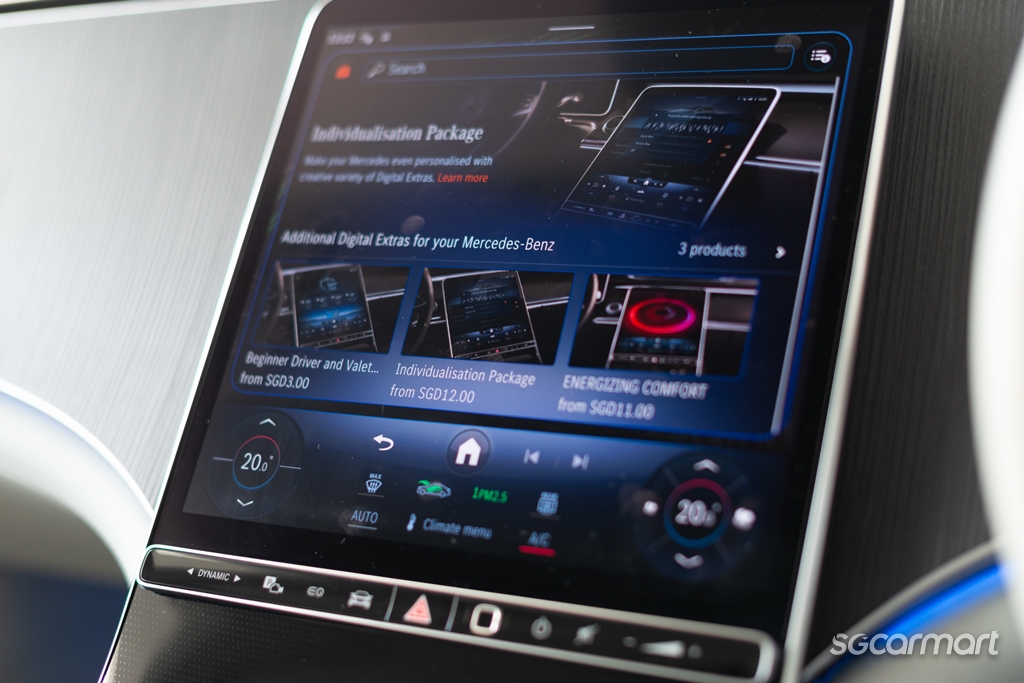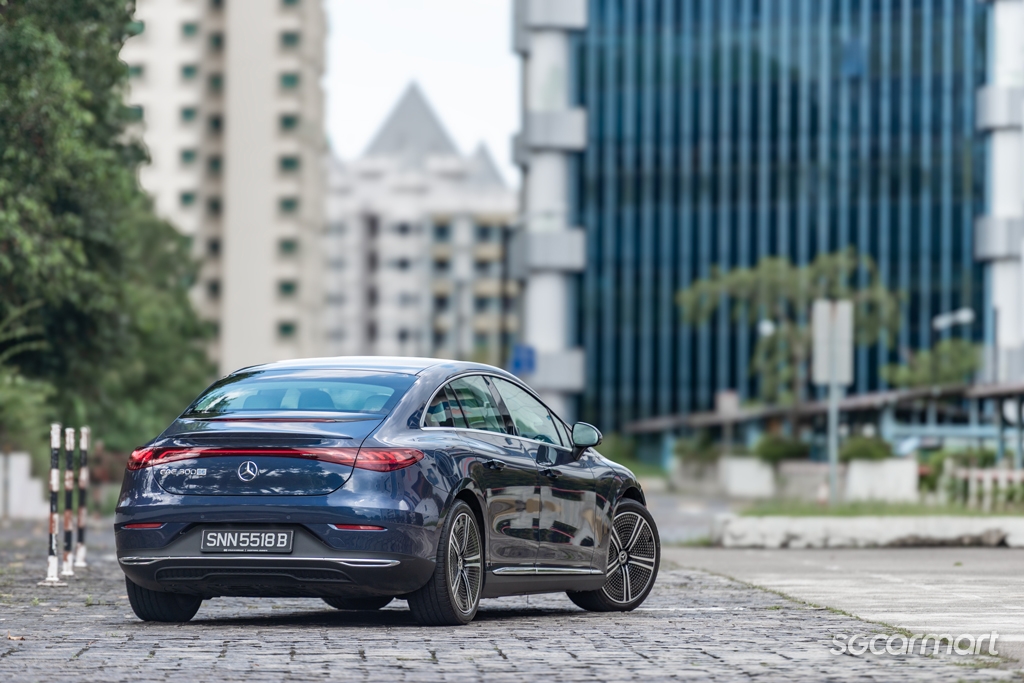Mercedes-Benz EQE300 Electric Art Review
24 May 2025|4,838 views
What We Like
Long driving range
Performance is easy to modulate
Fantastic rear-wheel steering
Luxurious cockpit feel
What We Dislike
Rear bench could be comfier
No AMG Line
We've seen this happen before: A carmaker introduces an electric model, waits a while, then introduces a lower-powered variant of it. BMW did it with the i4, which arrived in eDrive40 trim in 2022. In 2023, it was replaced by the i4 eDrive35, which has less performance and a smaller battery.
What seems like a step backwards is actually a positive move. When it comes to EVs, oftentimes a lower output combined with less weight is preferable to more horsepower and a heftier body.
Less power is made up for by an electric motor's lightning-quick response and is easier for regular consumers to modulate, while a lighter body betters handling and makes the car more fun to drive, especially if it is rear-wheel drive.
Spotting the distinctions
Mercedes has done the same move with the EQE300, the entry-point to the EQE Sedan range, which also features the EQE350 and hotter EQE43 AMG.
The EQE300 has the same electric powertrain as the EQE350 and is also rear-wheel drive, so there's essentially no weight difference between them. What sets them apart are styling, performance, and price.
The EQE300 can only be had in the Electric Art specification, while the EQE350 comes in AMG Line, which features AMG-specific body components such as the front and rear bumpers, along with more dynamic-looking AMG wheels.
The EQE300 Electric Art, on the other hand, eschews these for a more elegant character, with fewer fins and more stars, most of which are found on the rims covered with a three-pointed star motif. Because the EQE is strikingly similar to the EQS, it's not wrong to say that the former is a scaled-down version of the latter.
That's not a bad thing, though, for the EQE's interior is an inviting one. Soft upholstery, coupled with acres of wood trim, add to the luxurious vibe. Your attention is drawn to 12.8-inch infotainment display on the centre of the dashboard, with its punchy colours and bold graphics enhancing the user experience.
Technology meets luxury and panache in the EQE's cockpit, which boasts snazzy illuminated air-con vents, too
For some reason, though, I've yet to be comfortable with the backseat. Perhaps it's the angle of the squab and/or backrest. Whatever it is, the rear bench needs to be improved so it caters to a wider range of occupants. Perhaps passengers can be distracted by the superb ambient lighting, whose colours can vary with moods.
Boot capacity stands at 430 litres, with the square layout making it easy to stow and transport items. For versatility, the rear seats can also be folded should you need to carry longer objects.
A smooth operator
It may be the entry-point to the range, but the EQE300 does not lack poke. Fed by an 89kWh lithium-ion battery, the electric motor provides 180kW (241bhp) and 550Nm of torque. Despite weighing 2,465kg, the EQE300 does zero to 100km/h in 7.3 seconds.
But how much slower is this compared to the EQE350, which has 215kW (288bhp) and 765Nm? In spite of the big difference in torque figures, the EQE350 only bests the EQE300's century sprint by one second. And while a second is still a second, you can't tell the difference on public roads.
Besides, with the immediacy of an electric powertrain, the EQE300 feels capable and offers confidence when overtaking. In terms of driving range, the EQE300 can cover around 600km, whereas the more powerful EQE350 can manage up to 570km.
This EQE shines during low-speed manoeuvres, too, with the rear-axle steering able to turn the rear wheels up to 10 degrees in the opposite direction to the front tyres. This reduces the turning circle to 12.5 metres, which, for a car measuring 4,964mm long, results in U-turns that are comparable to that of a compact saloon.
Apparently, those who aren't used to this must moderate their steering inputs, as the risk of turning too much too early can result in kerbed wheels or scratched body panels. At higher speeds, the rear wheels are steered in the same direction as the front wheels to improve stability.
Rear-wheel drive makes the EQE300 feel just as nimble as its more powerful sibling, and lighter on its feet compared to the all-wheel drive EQE43 AMG. Mercedes doesn't market this model as sporty or quick, so the progressive handling and relatively pliant ride suit the car well.
Would a sharper, more communicative helm and a flatter feel through the corners make the EQE300 more fun to drive? Yes, though that would not be keeping with its essence and character, which is aimed at cossetting rather than thrilling the driver.
Comparing notes
The EQE300 currently starts at $408,888 while the EQE350 is priced at $427,888 (both figures inclusive of COE). One could argue that at these points, a $19,000 difference is inconsequential. Even if it buys you that extra bit of performance and additional bragging rights on paper.
But you can also argue that the $19,000 premium doesn't really buy much apart from the AMG body kit and wheels. And despite the EQE350 having another 47bhp and 215Nm of torque, the improvement in acceleration isn't noticeable.
Thus, the EQE300 is more than just the entry-level model in the lineup. It is also the one that makes the most sense, and hence, should be the first consideration for the buyer shopping in this range.
These stories may interest you too:
The BMW i5 is effortless to drive, comfortable and quiet, loaded with tech, but without forsaking its dynamic DNA
If you're someone who enjoys driving, well-heeled and a self-declared tree-hugger, the entry-level all-electric Porsche Taycan sports sedan will be a superb choice for you
What We Like
Long driving range
Performance is easy to modulate
Fantastic rear-wheel steering
Luxurious cockpit feel
What We Dislike
Rear bench could be comfier
No AMG Line
We've seen this happen before: A carmaker introduces an electric model, waits a while, then introduces a lower-powered variant of it. BMW did it with the i4, which arrived in eDrive40 trim in 2022. In 2023, it was replaced by the i4 eDrive35, which has less performance and a smaller battery.
What seems like a step backwards is actually a positive move. When it comes to EVs, oftentimes a lower output combined with less weight is preferable to more horsepower and a heftier body.
Less power is made up for by an electric motor's lightning-quick response and is easier for regular consumers to modulate, while a lighter body betters handling and makes the car more fun to drive, especially if it is rear-wheel drive.
Spotting the distinctions
Mercedes has done the same move with the EQE300, the entry-point to the EQE Sedan range, which also features the EQE350 and hotter EQE43 AMG.
The EQE300 has the same electric powertrain as the EQE350 and is also rear-wheel drive, so there's essentially no weight difference between them. What sets them apart are styling, performance, and price.
The EQE300 can only be had in the Electric Art specification, while the EQE350 comes in AMG Line, which features AMG-specific body components such as the front and rear bumpers, along with more dynamic-looking AMG wheels.
The EQE300 Electric Art, on the other hand, eschews these for a more elegant character, with fewer fins and more stars, most of which are found on the rims covered with a three-pointed star motif. Because the EQE is strikingly similar to the EQS, it's not wrong to say that the former is a scaled-down version of the latter.
That's not a bad thing, though, for the EQE's interior is an inviting one. Soft upholstery, coupled with acres of wood trim, add to the luxurious vibe. Your attention is drawn to 12.8-inch infotainment display on the centre of the dashboard, with its punchy colours and bold graphics enhancing the user experience.
Technology meets luxury and panache in the EQE's cockpit, which boasts snazzy illuminated air-con vents, too
For some reason, though, I've yet to be comfortable with the backseat. Perhaps it's the angle of the squab and/or backrest. Whatever it is, the rear bench needs to be improved so it caters to a wider range of occupants. Perhaps passengers can be distracted by the superb ambient lighting, whose colours can vary with moods.
Boot capacity stands at 430 litres, with the square layout making it easy to stow and transport items. For versatility, the rear seats can also be folded should you need to carry longer objects.
A smooth operator
It may be the entry-point to the range, but the EQE300 does not lack poke. Fed by an 89kWh lithium-ion battery, the electric motor provides 180kW (241bhp) and 550Nm of torque. Despite weighing 2,465kg, the EQE300 does zero to 100km/h in 7.3 seconds.
But how much slower is this compared to the EQE350, which has 215kW (288bhp) and 765Nm? In spite of the big difference in torque figures, the EQE350 only bests the EQE300's century sprint by one second. And while a second is still a second, you can't tell the difference on public roads.
Besides, with the immediacy of an electric powertrain, the EQE300 feels capable and offers confidence when overtaking. In terms of driving range, the EQE300 can cover around 600km, whereas the more powerful EQE350 can manage up to 570km.
This EQE shines during low-speed manoeuvres, too, with the rear-axle steering able to turn the rear wheels up to 10 degrees in the opposite direction to the front tyres. This reduces the turning circle to 12.5 metres, which, for a car measuring 4,964mm long, results in U-turns that are comparable to that of a compact saloon.
Apparently, those who aren't used to this must moderate their steering inputs, as the risk of turning too much too early can result in kerbed wheels or scratched body panels. At higher speeds, the rear wheels are steered in the same direction as the front wheels to improve stability.
Rear-wheel drive makes the EQE300 feel just as nimble as its more powerful sibling, and lighter on its feet compared to the all-wheel drive EQE43 AMG. Mercedes doesn't market this model as sporty or quick, so the progressive handling and relatively pliant ride suit the car well.
Would a sharper, more communicative helm and a flatter feel through the corners make the EQE300 more fun to drive? Yes, though that would not be keeping with its essence and character, which is aimed at cossetting rather than thrilling the driver.
Comparing notes
The EQE300 currently starts at $408,888 while the EQE350 is priced at $427,888 (both figures inclusive of COE). One could argue that at these points, a $19,000 difference is inconsequential. Even if it buys you that extra bit of performance and additional bragging rights on paper.
But you can also argue that the $19,000 premium doesn't really buy much apart from the AMG body kit and wheels. And despite the EQE350 having another 47bhp and 215Nm of torque, the improvement in acceleration isn't noticeable.
Thus, the EQE300 is more than just the entry-level model in the lineup. It is also the one that makes the most sense, and hence, should be the first consideration for the buyer shopping in this range.
These stories may interest you too:
The BMW i5 is effortless to drive, comfortable and quiet, loaded with tech, but without forsaking its dynamic DNA
If you're someone who enjoys driving, well-heeled and a self-declared tree-hugger, the entry-level all-electric Porsche Taycan sports sedan will be a superb choice for you
Car Information
Mercedes-Benz EQE Electric EQE 300 Electric Art 89 kWh (A)
$420,888
CAT B|Electric|4.8km/kWh
Horsepower
180kW (241 bhp)
Torque
550 Nm
Acceleration
7.3sec (0-100km /hr)
Thank You For Your Subscription.
- Spotting The Distinctions
- A Smooth Operator
- Comparing Notes


















































